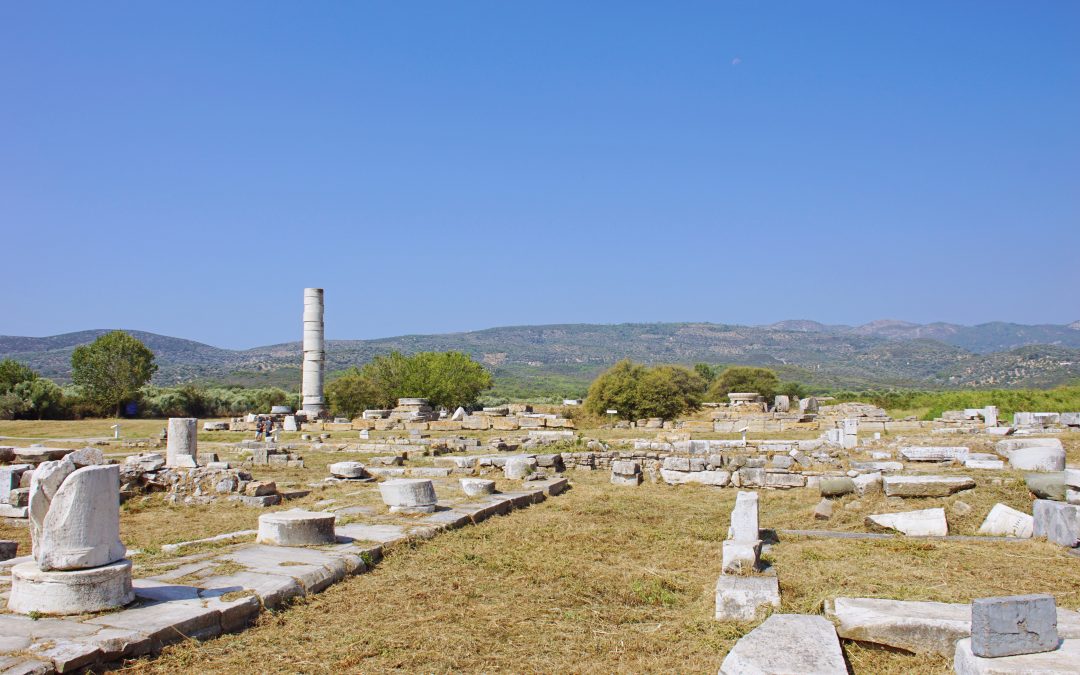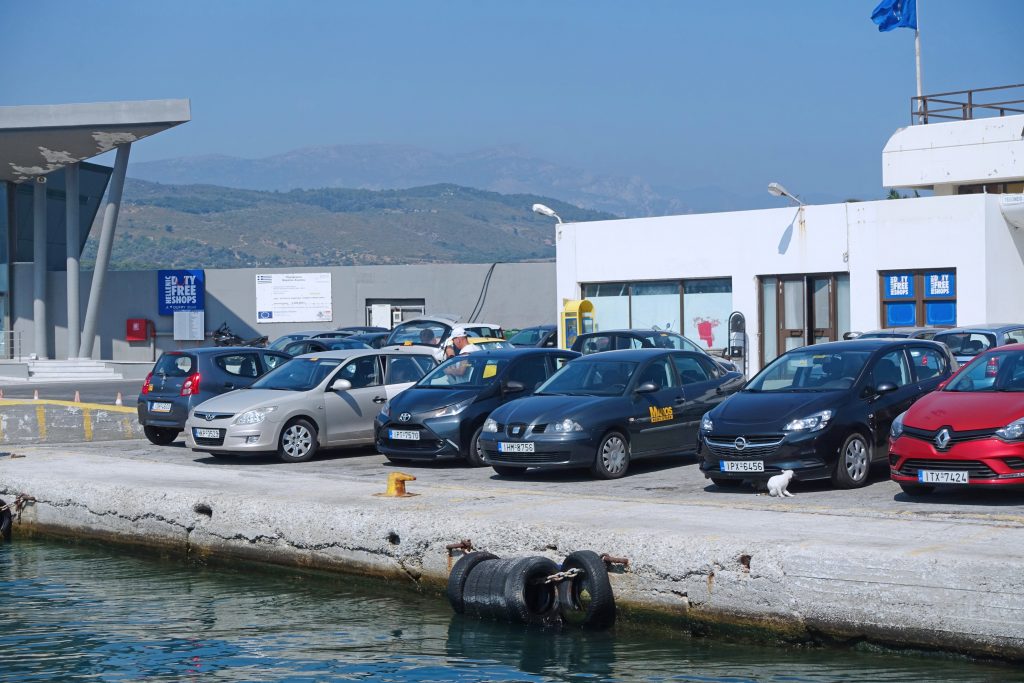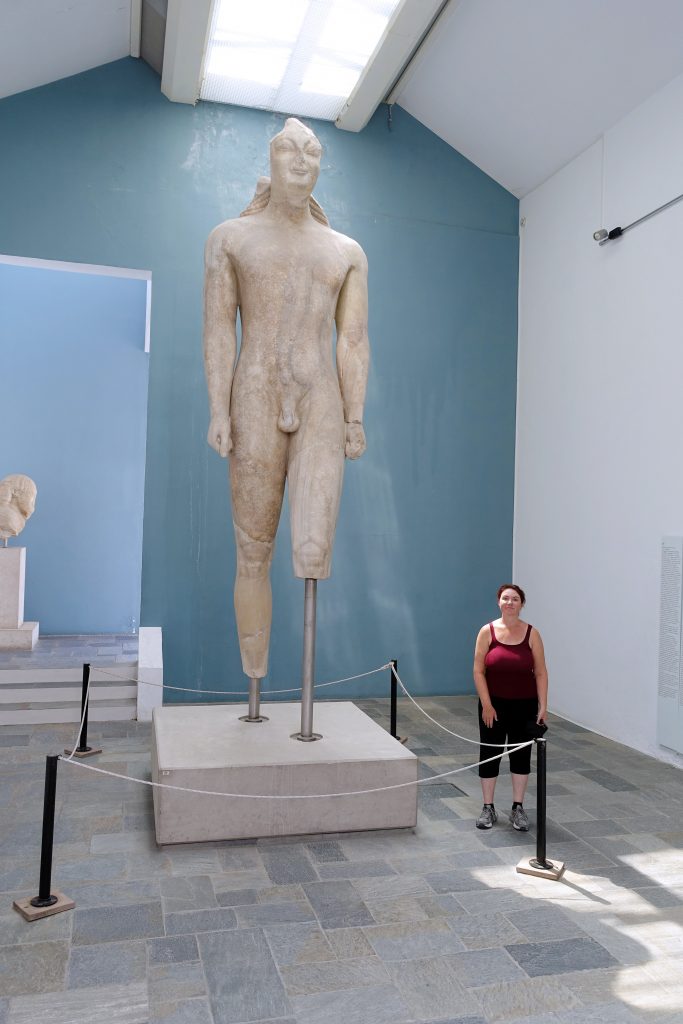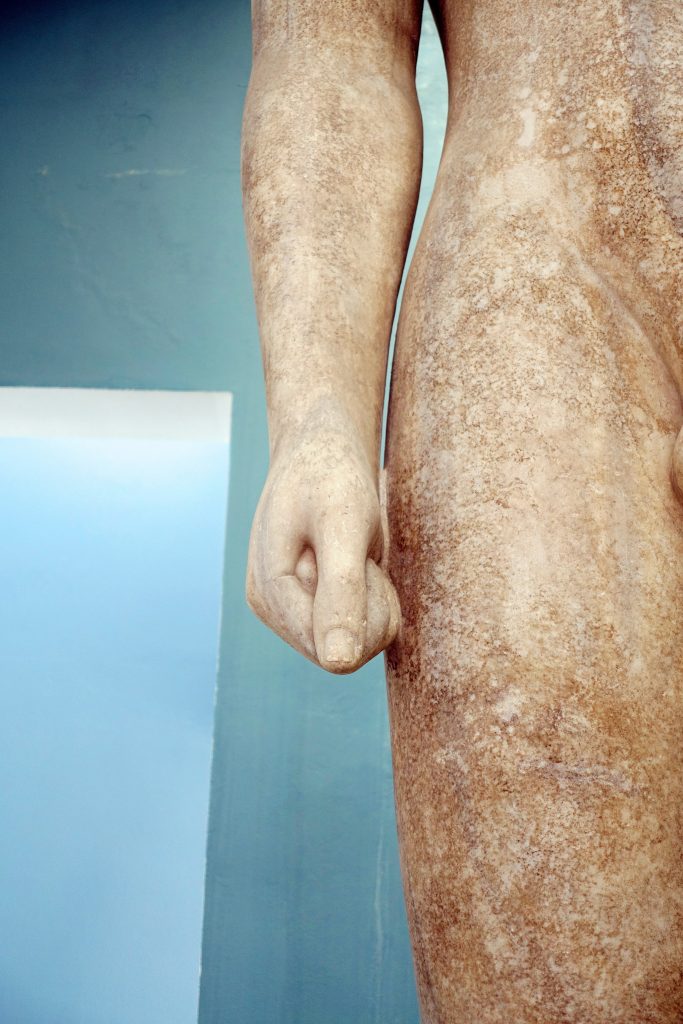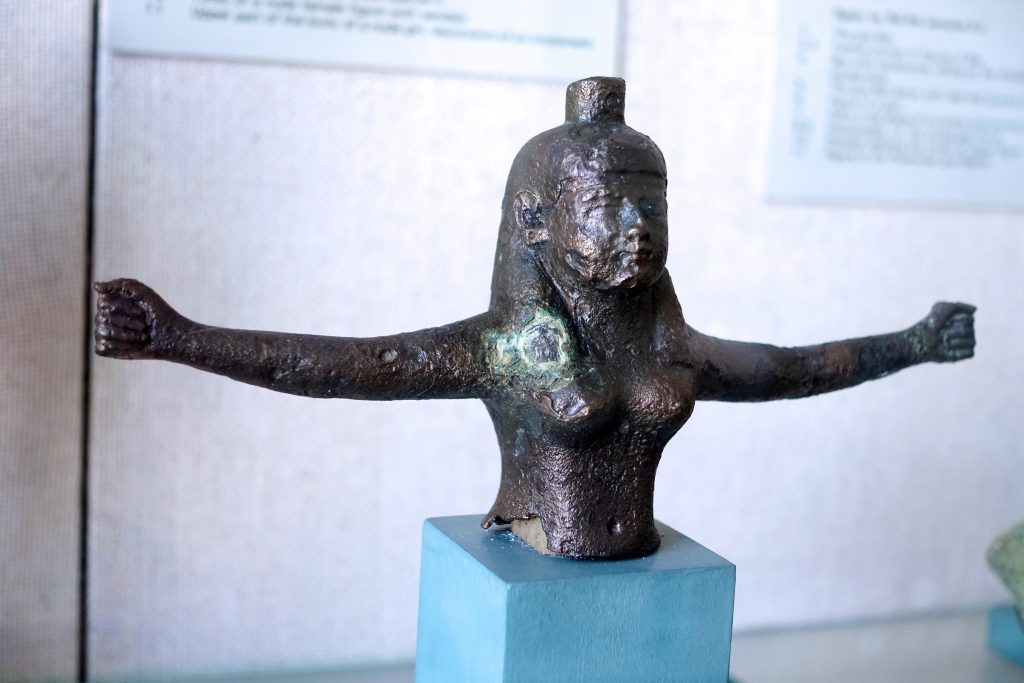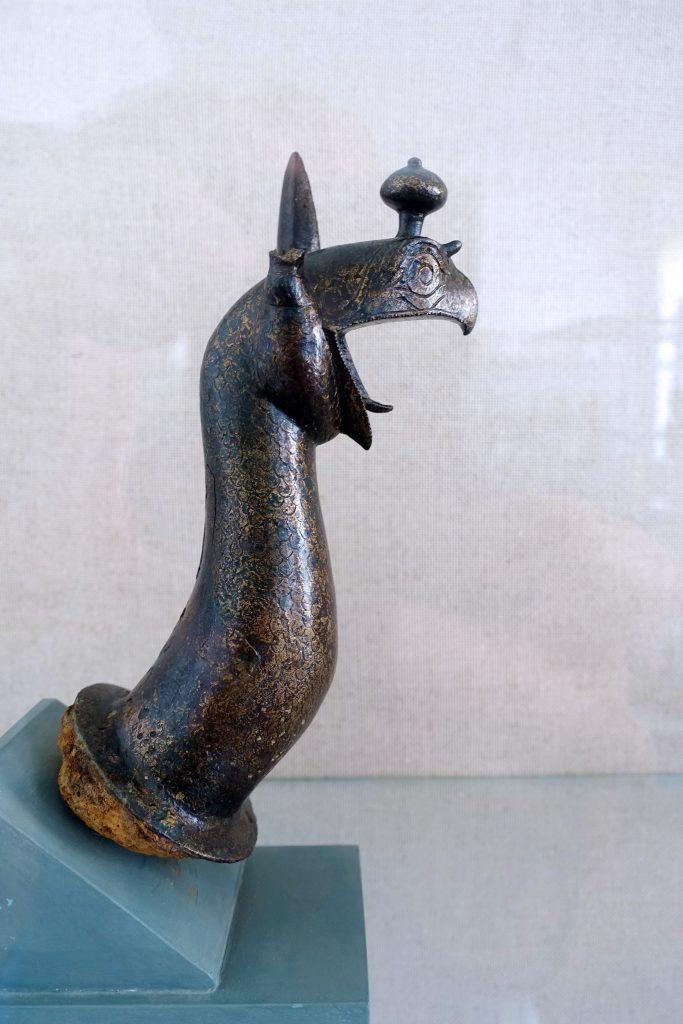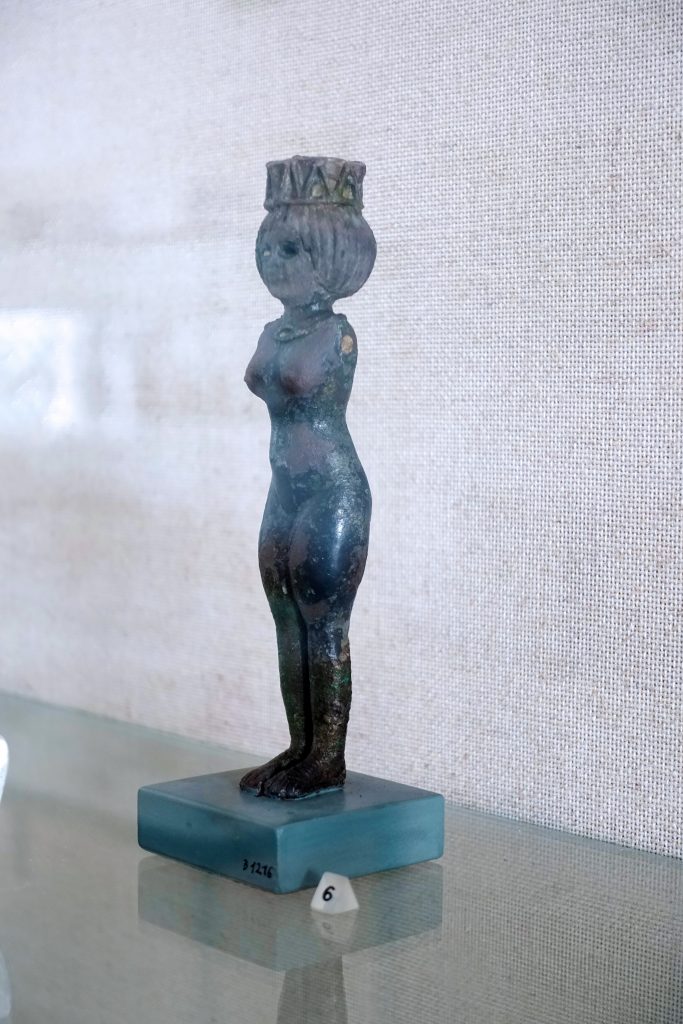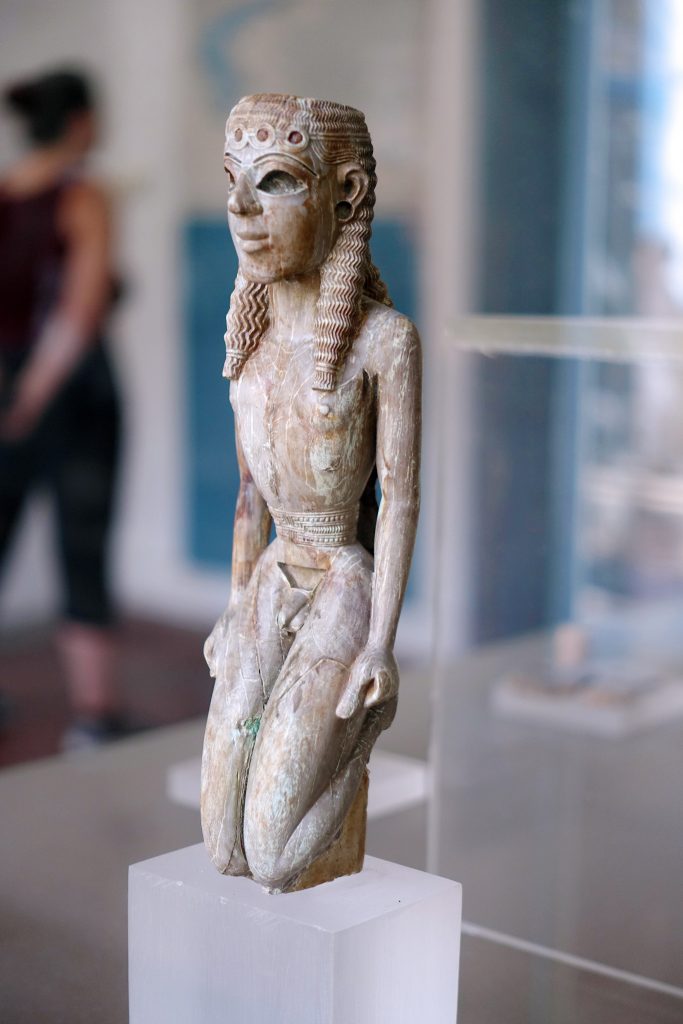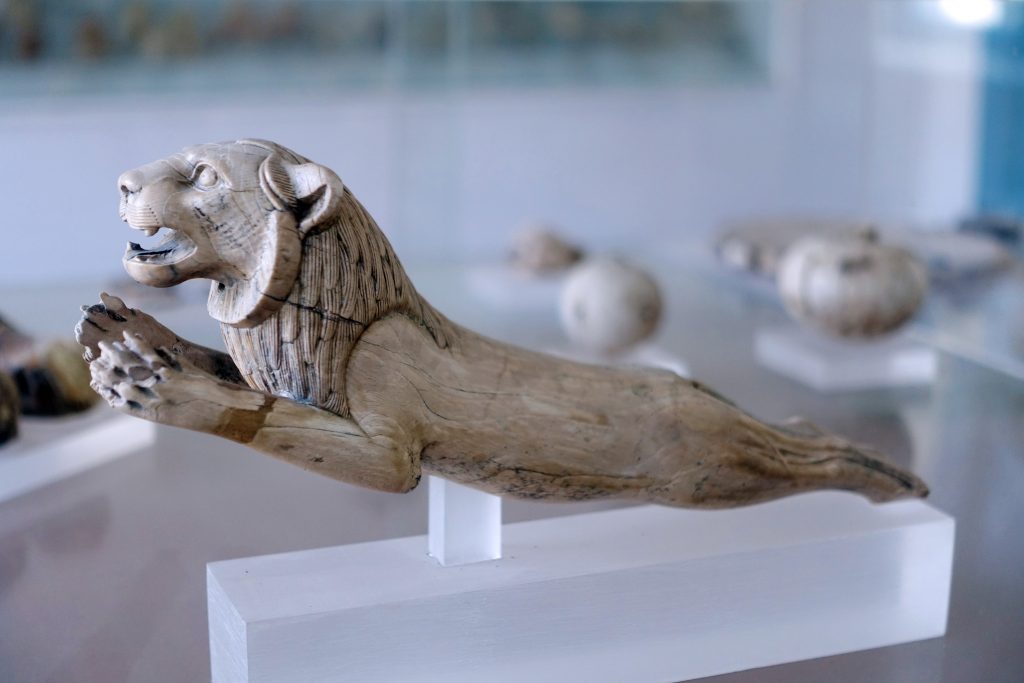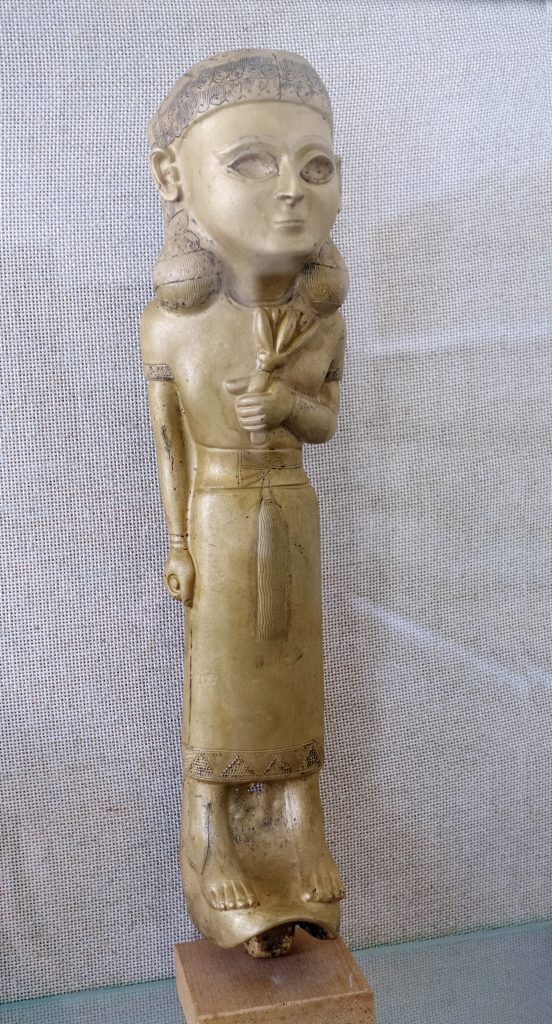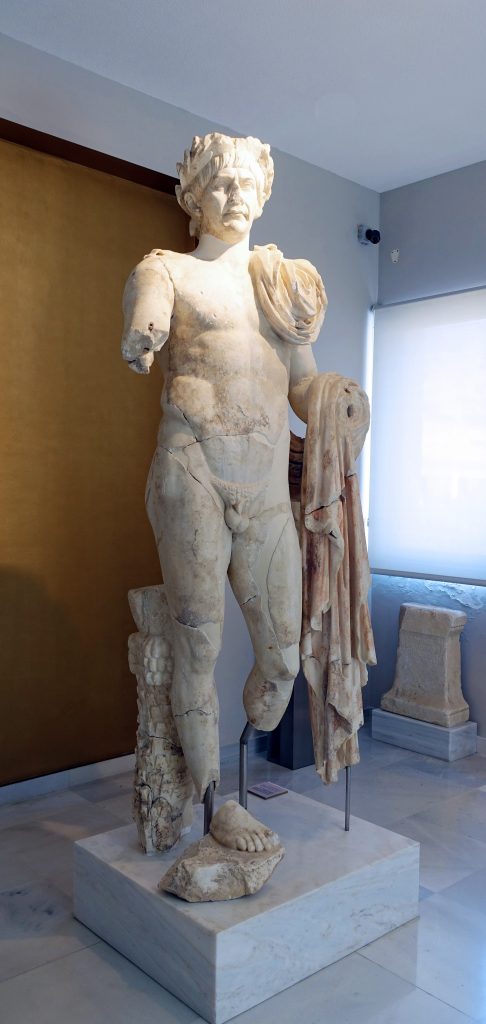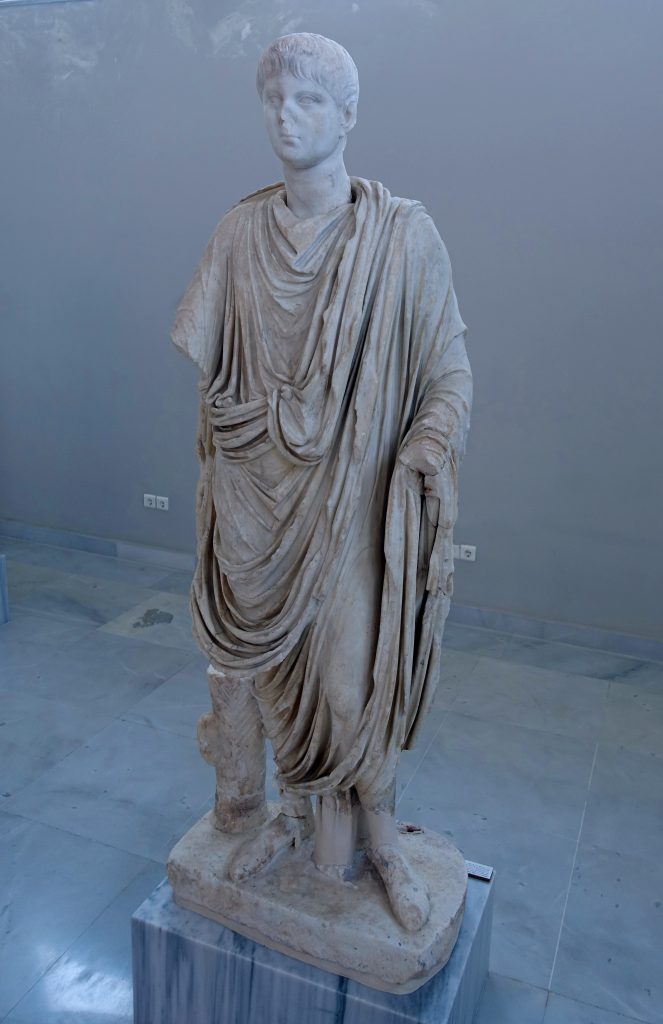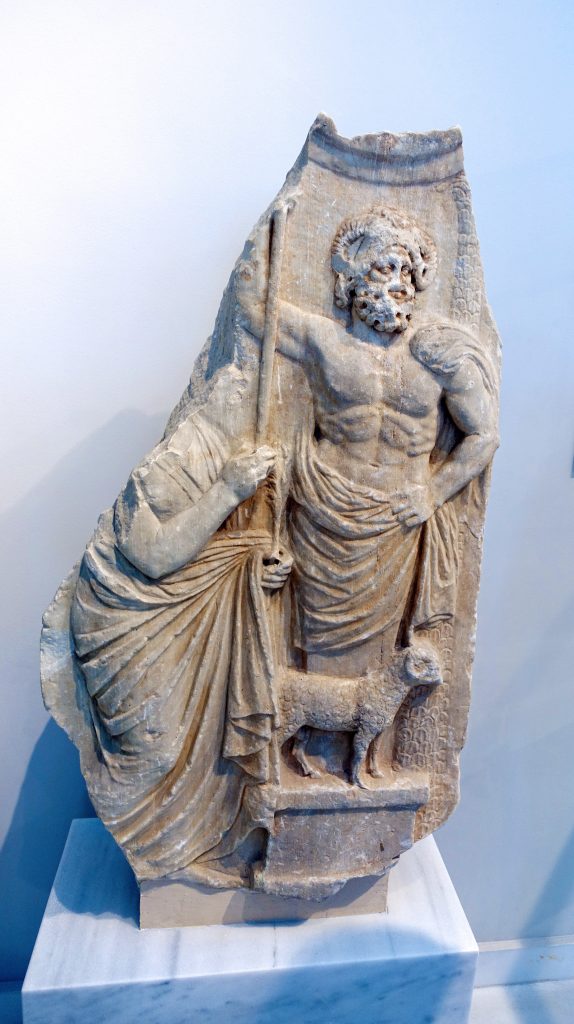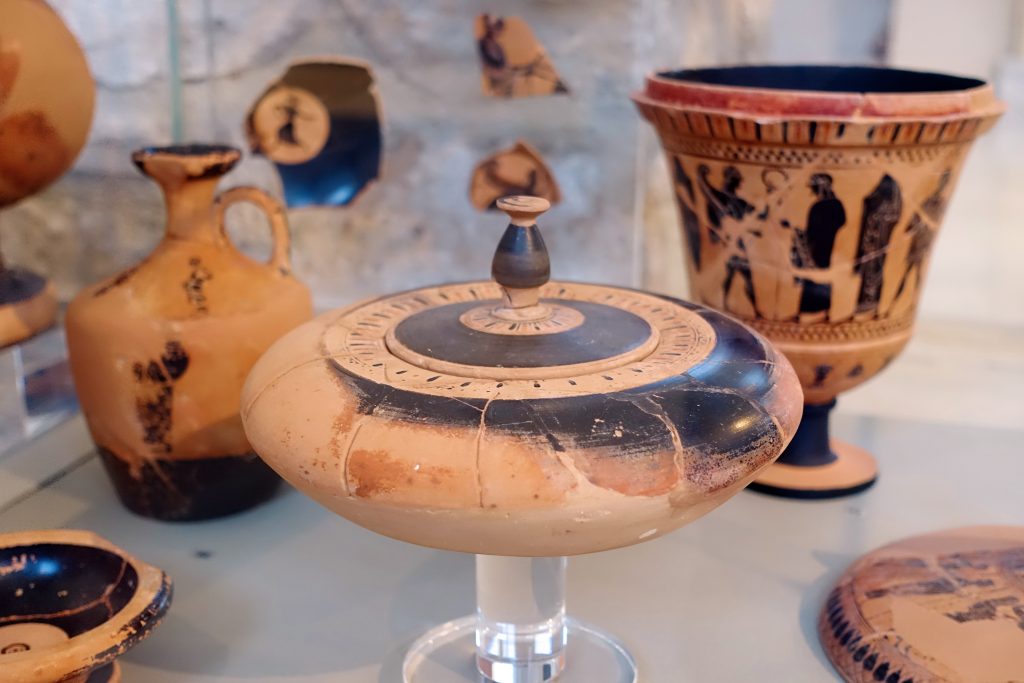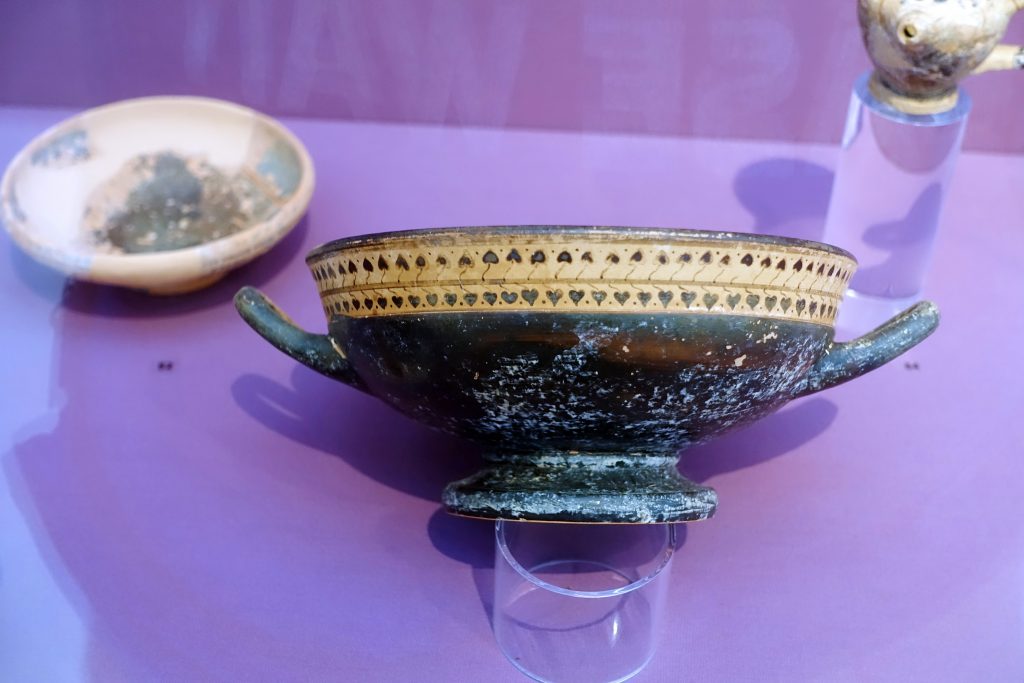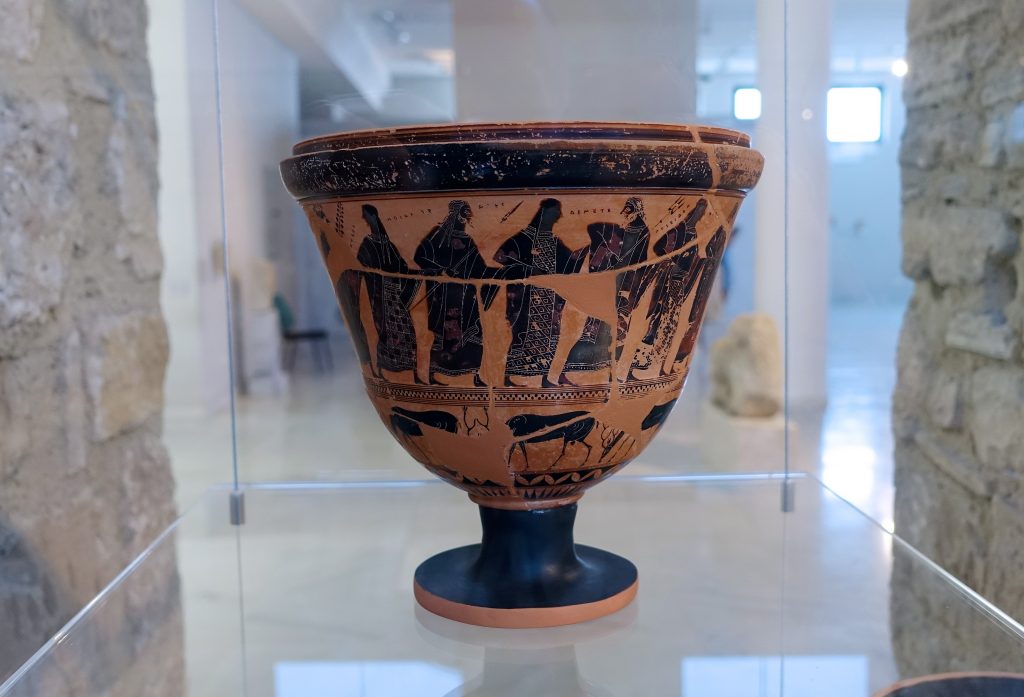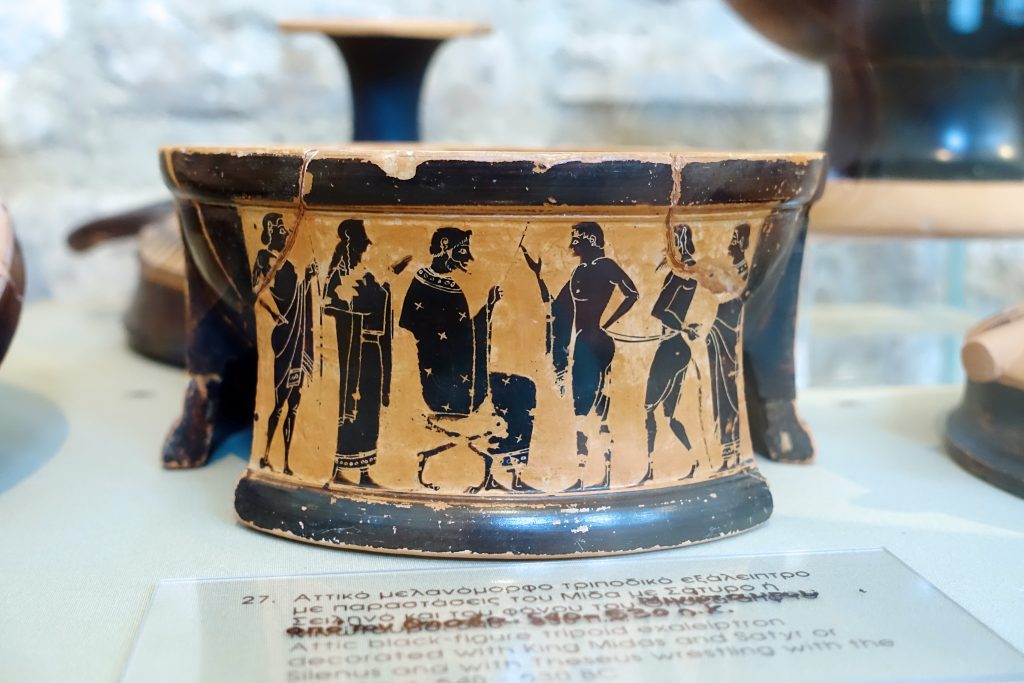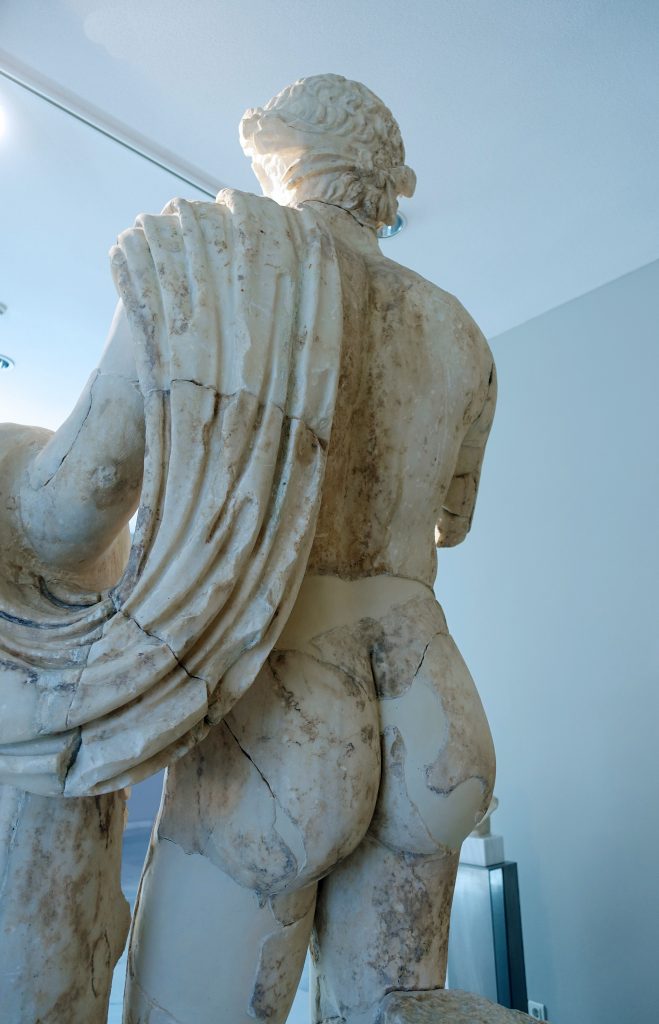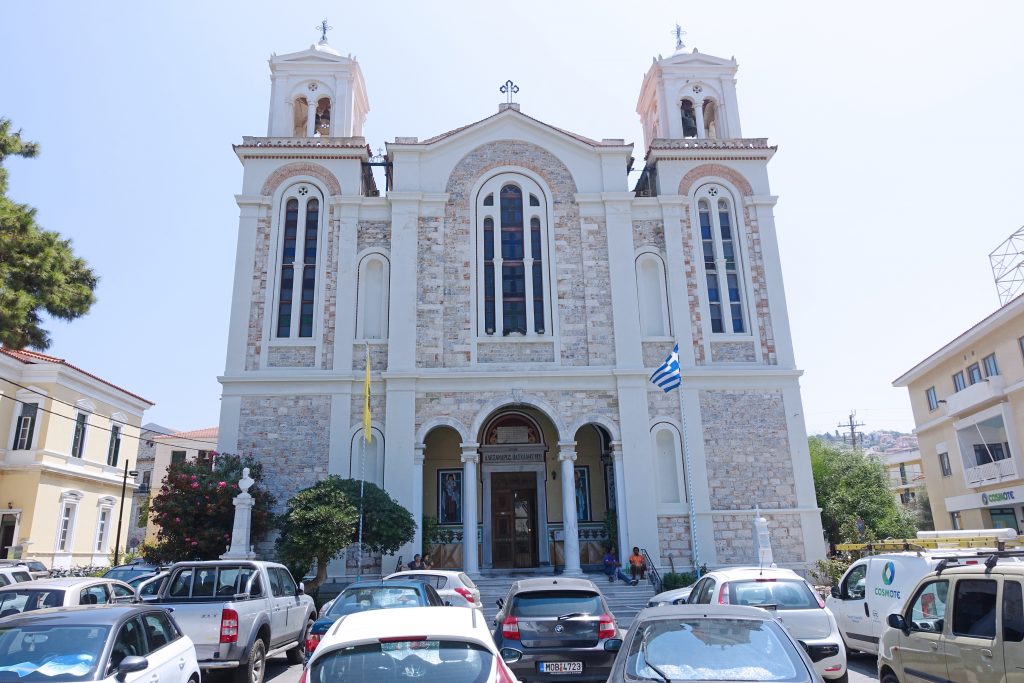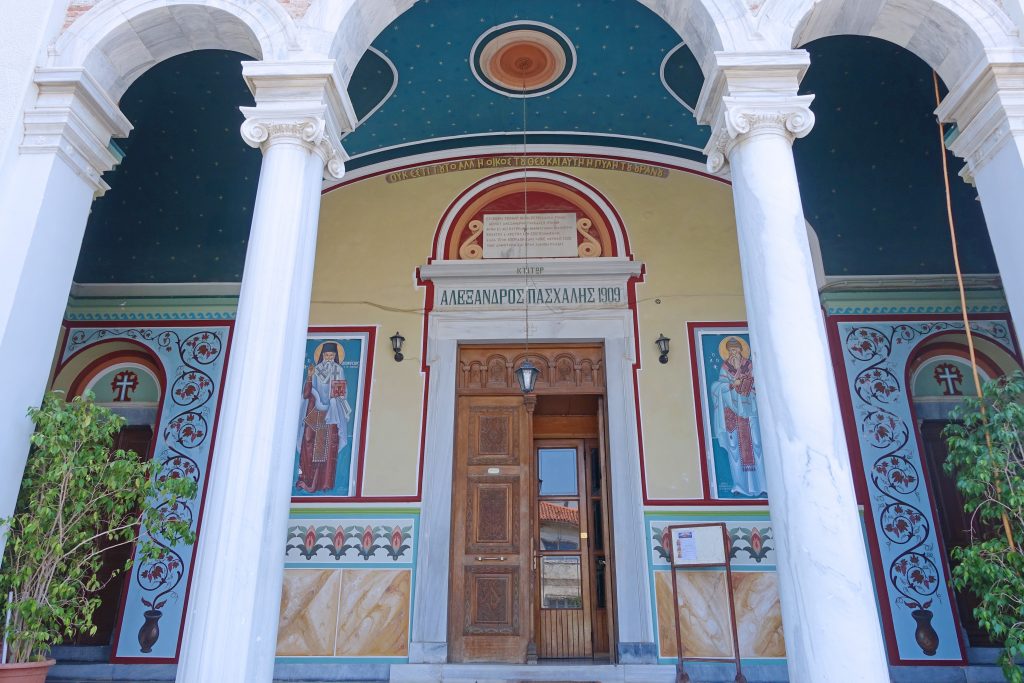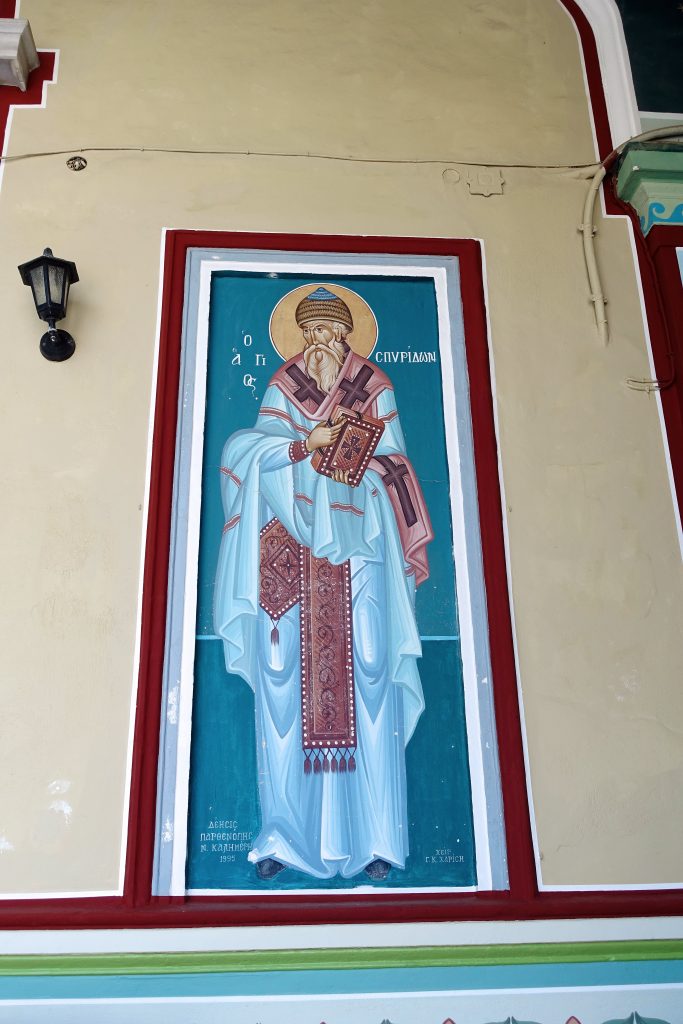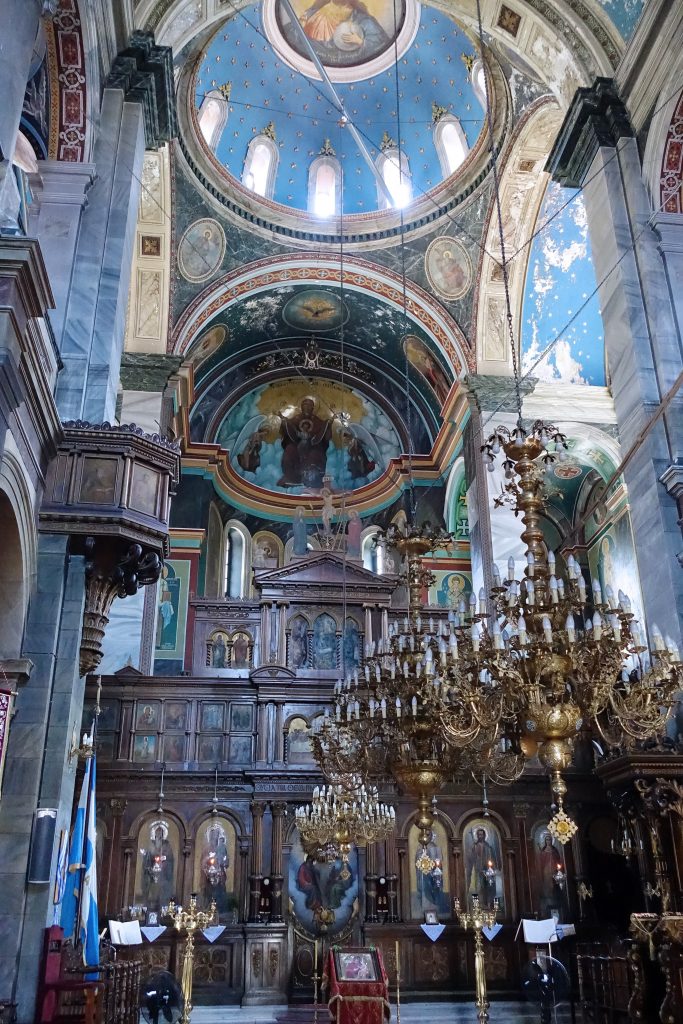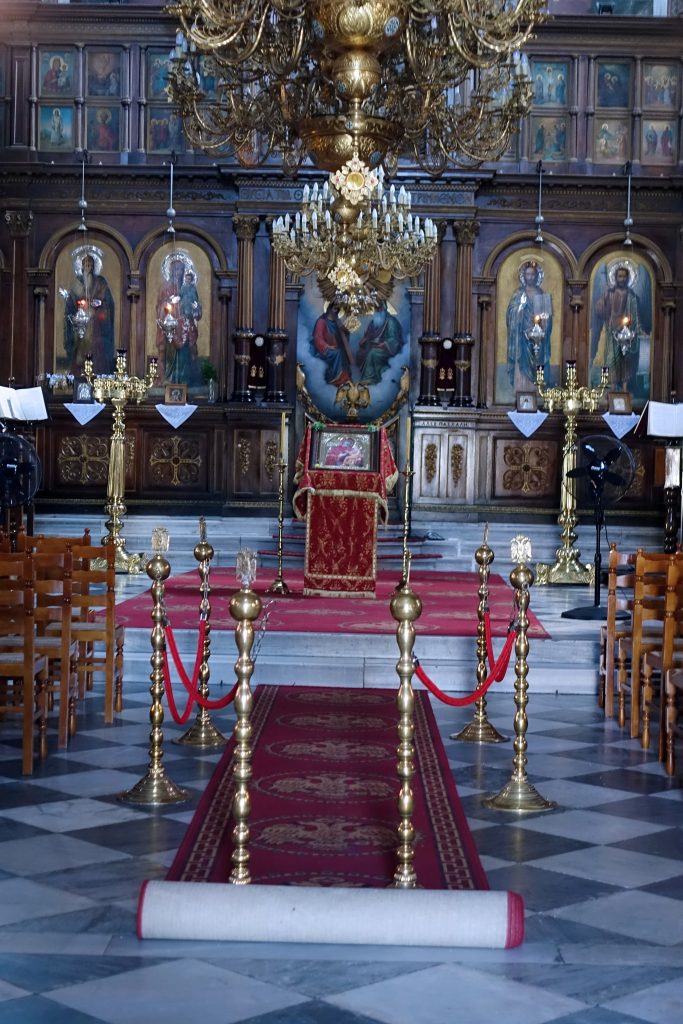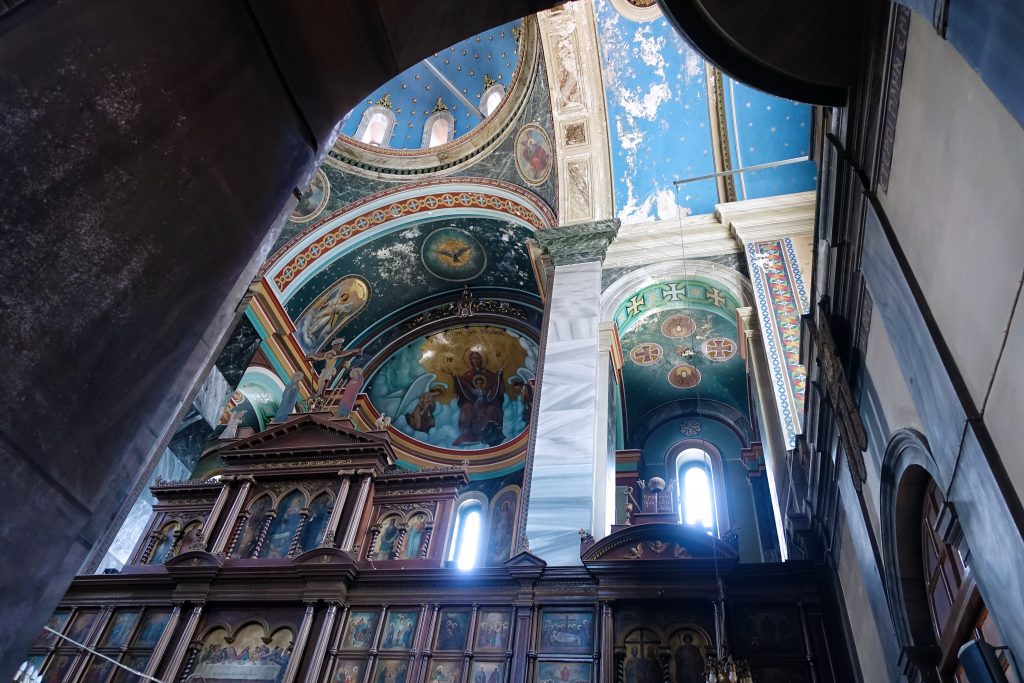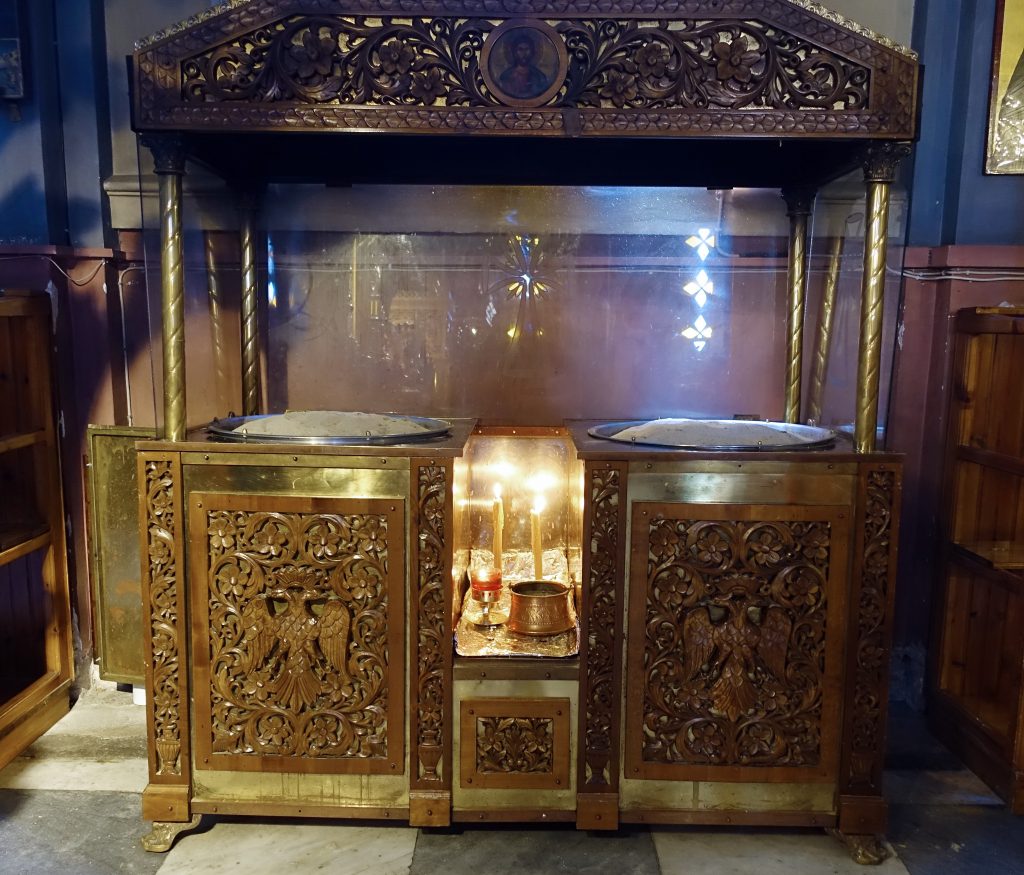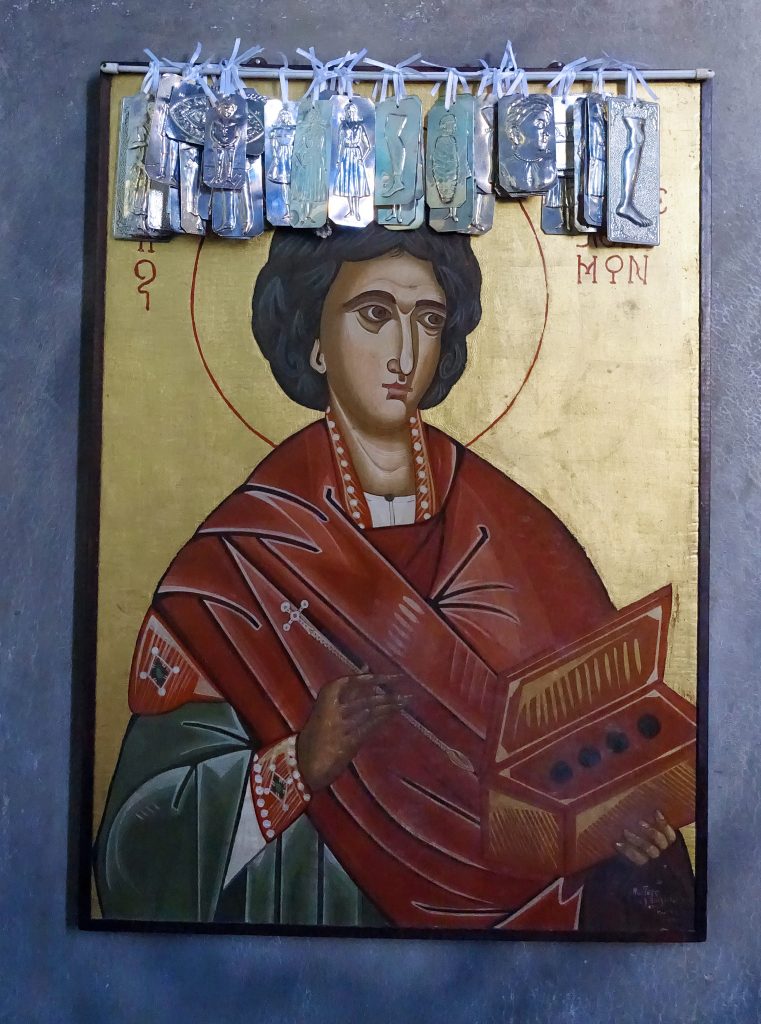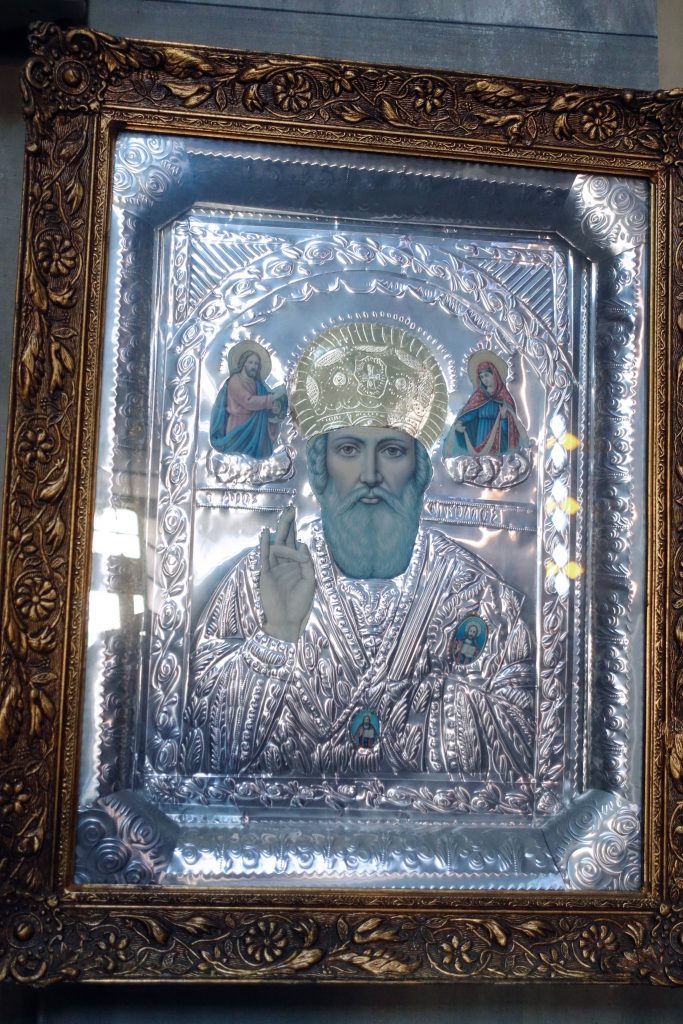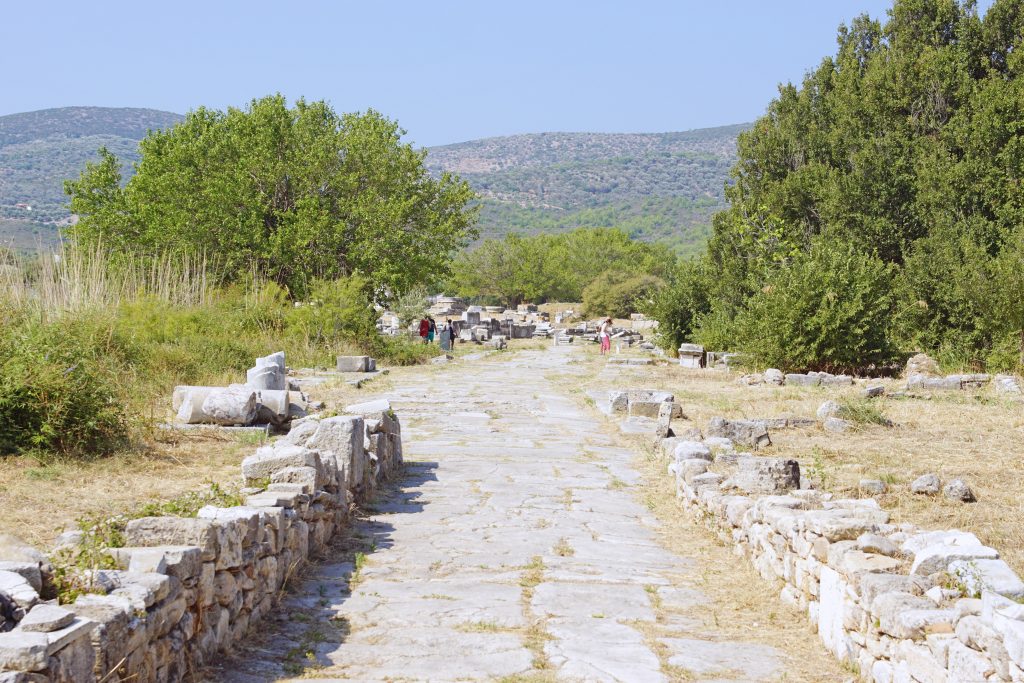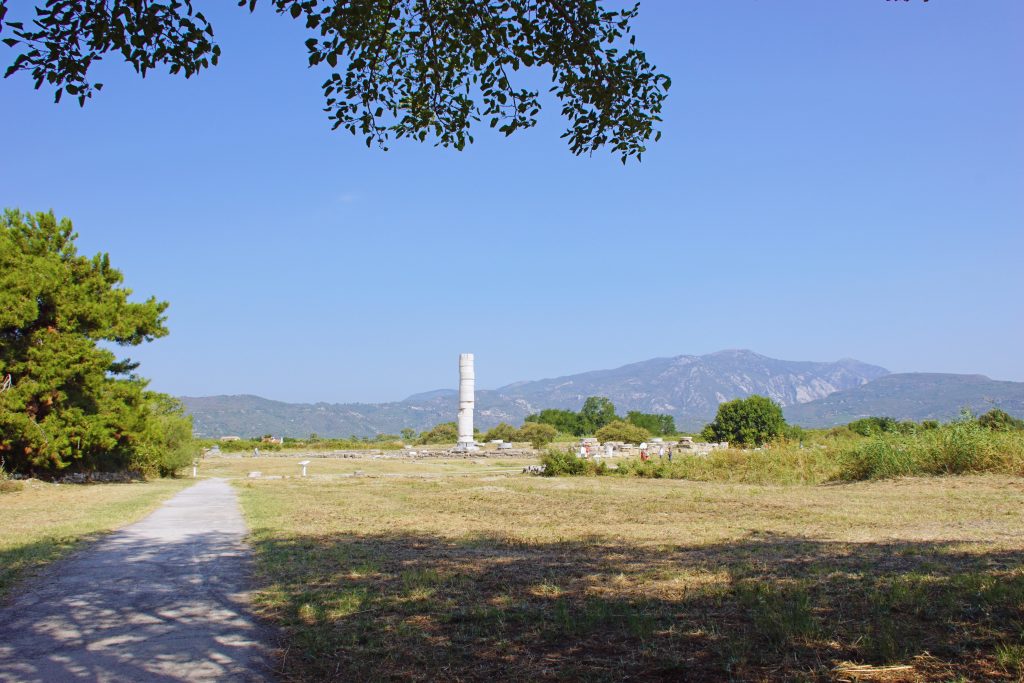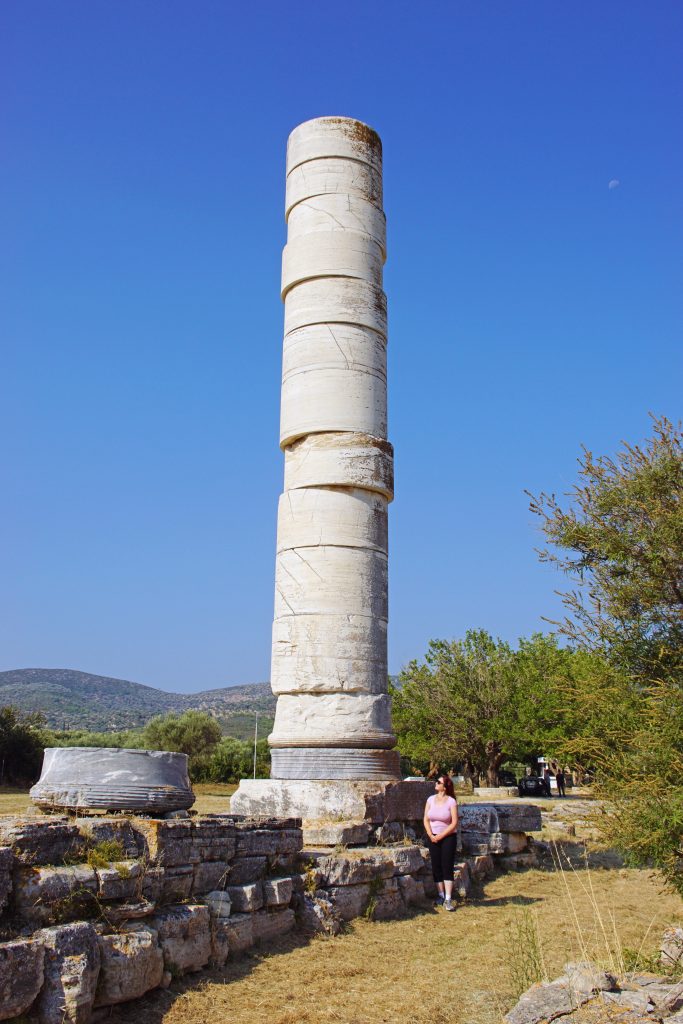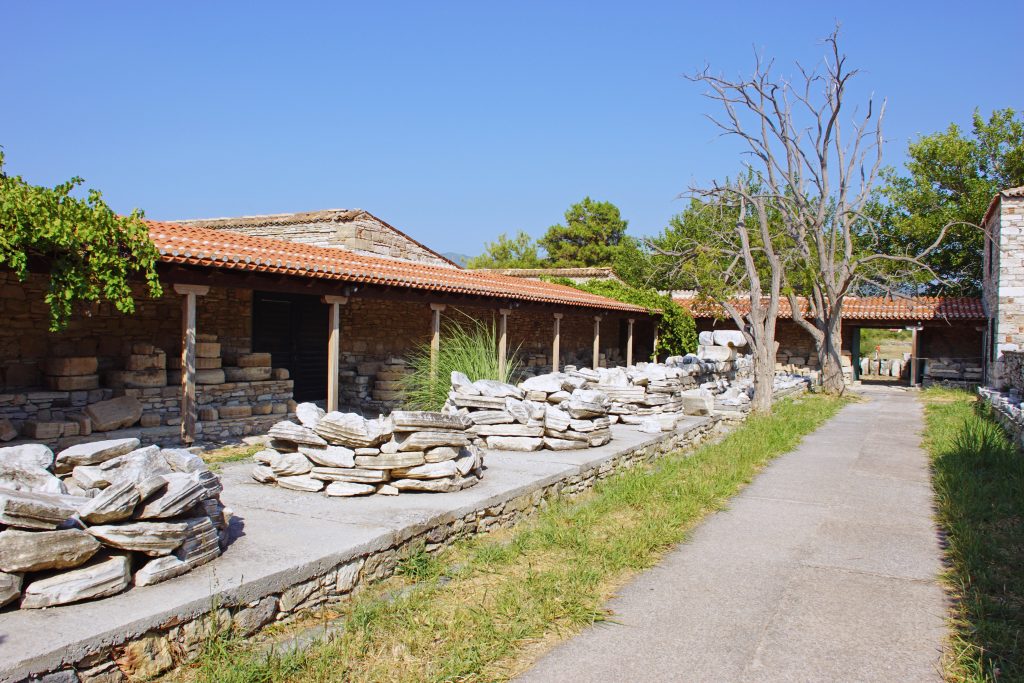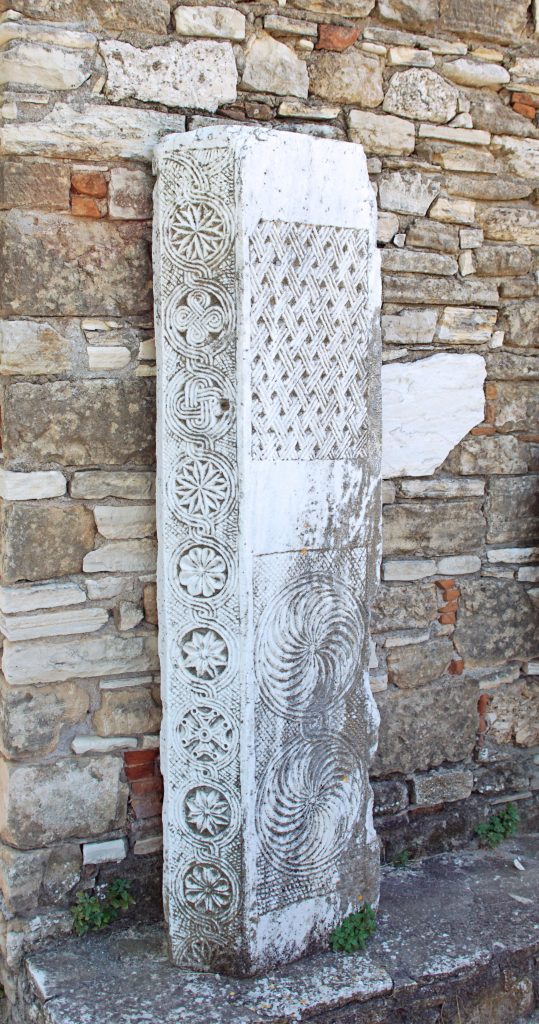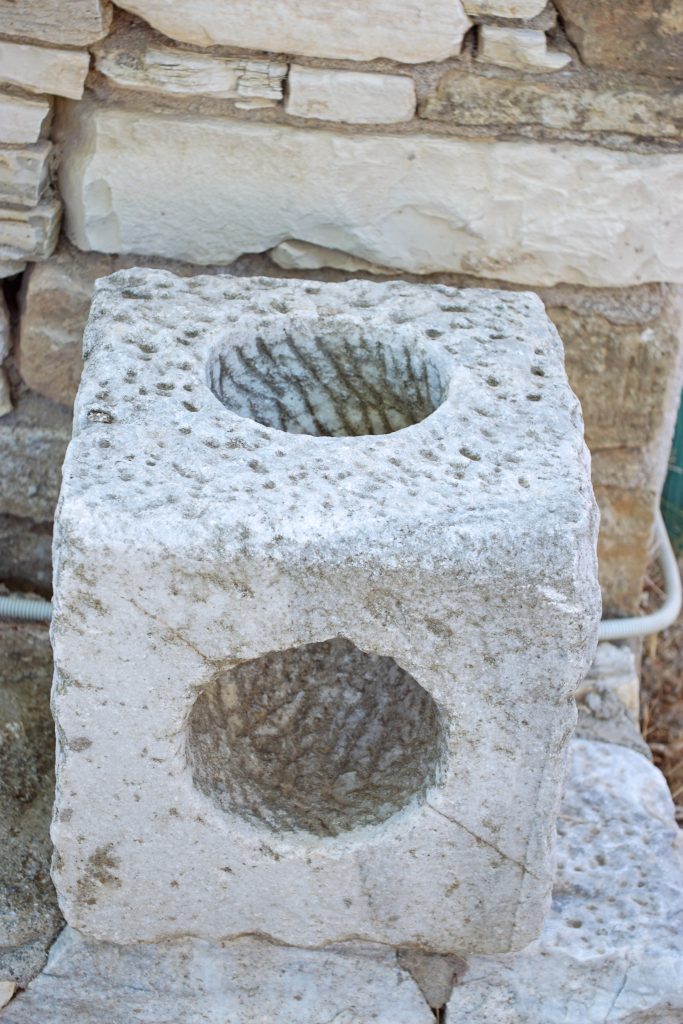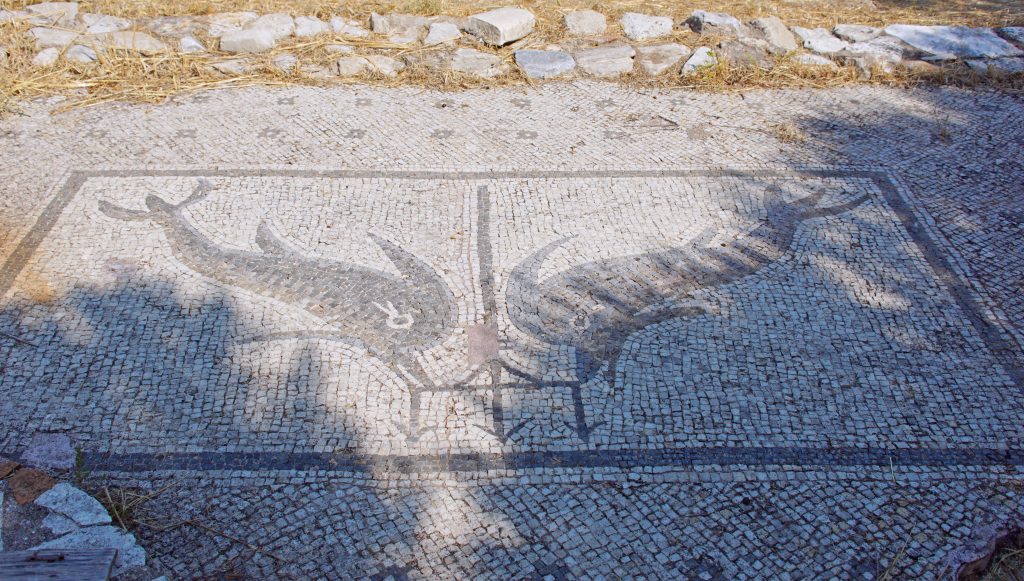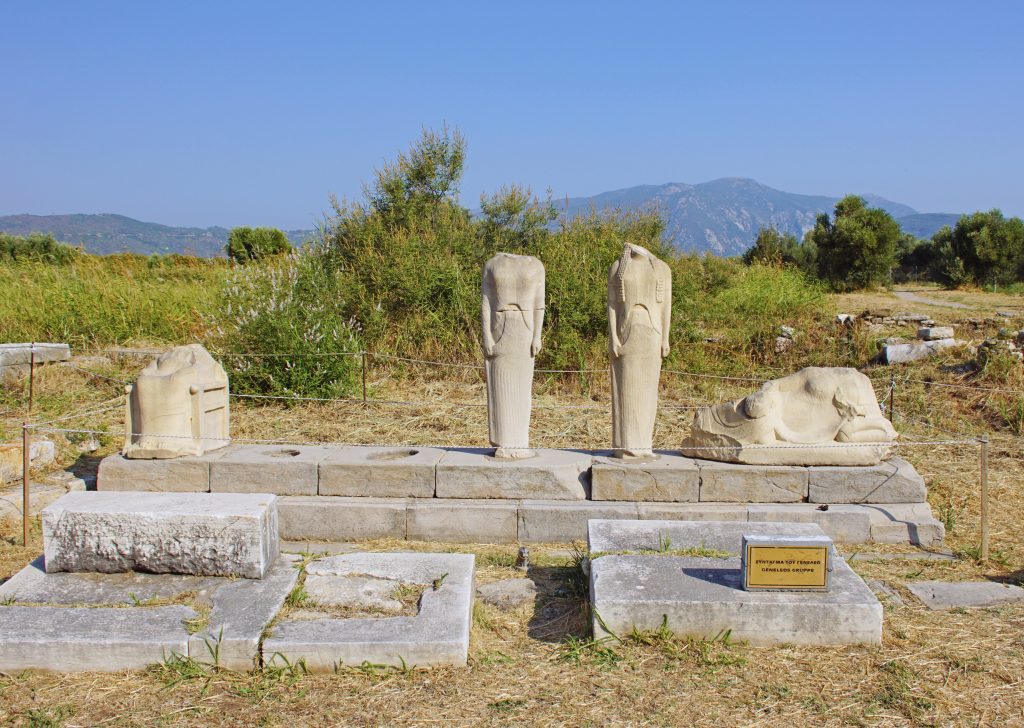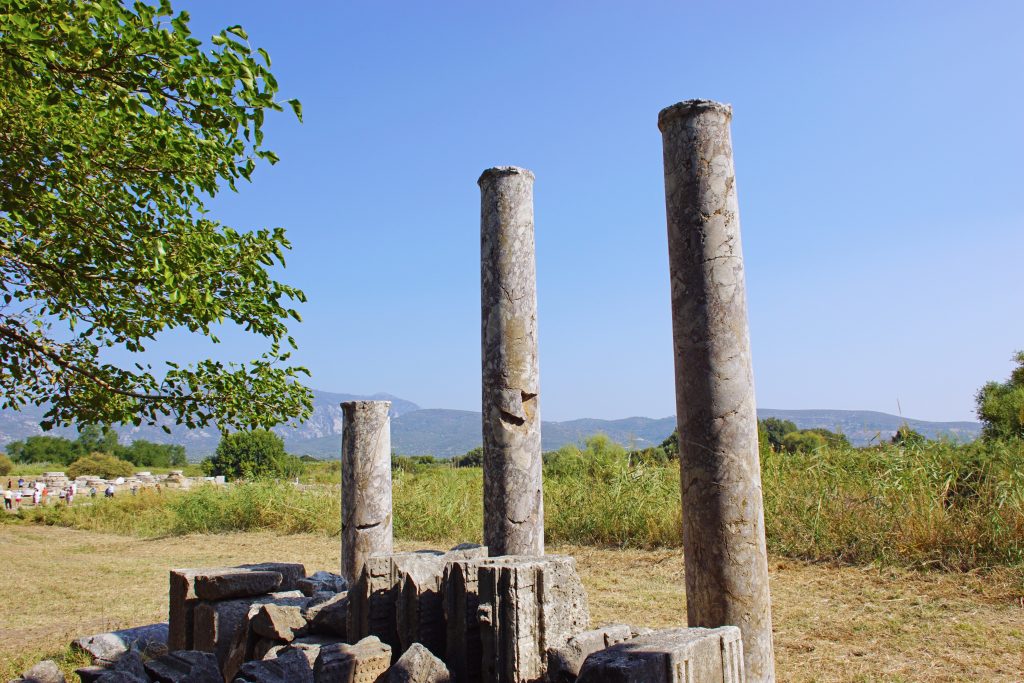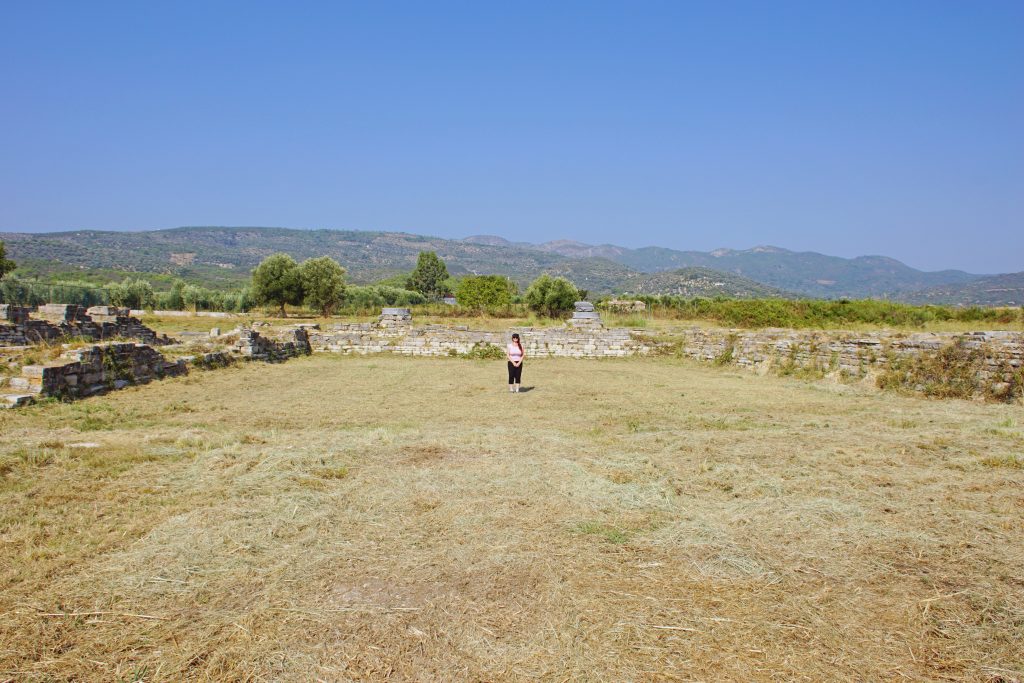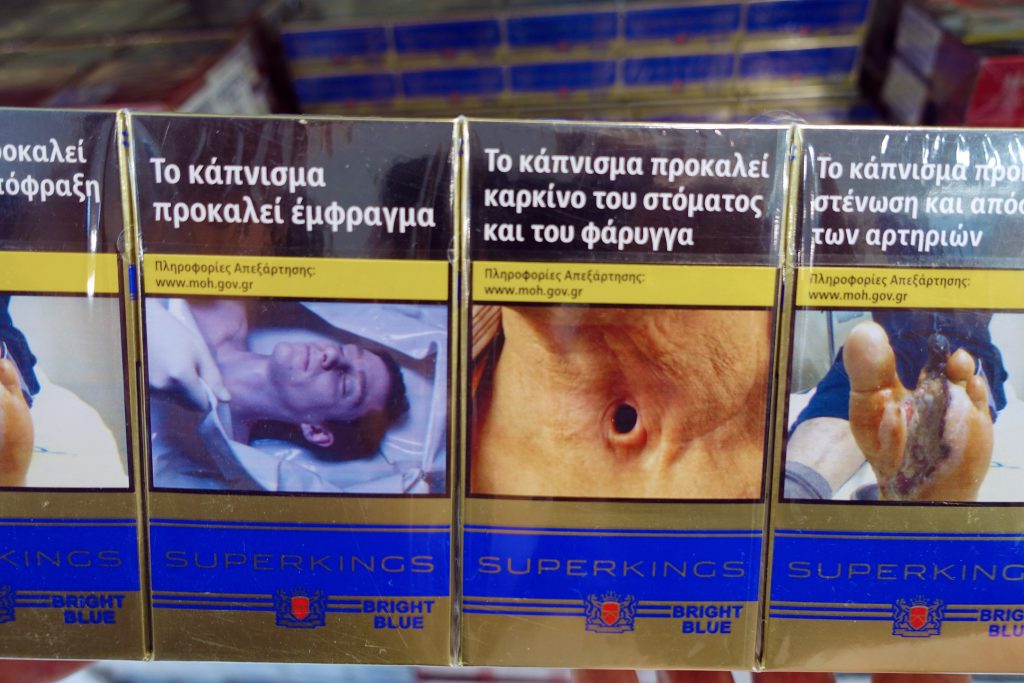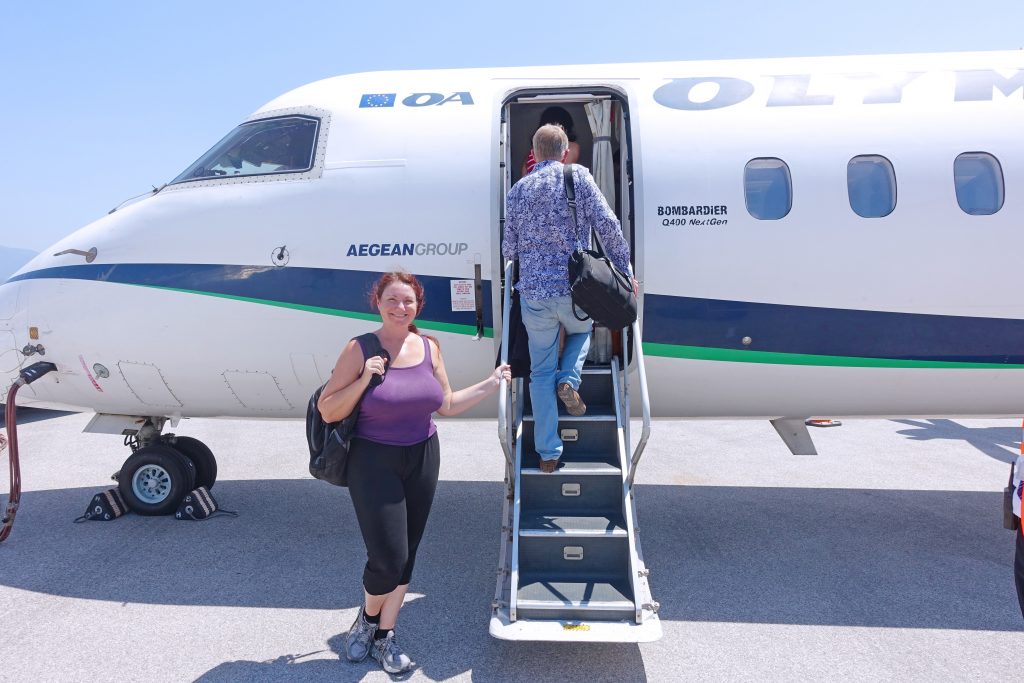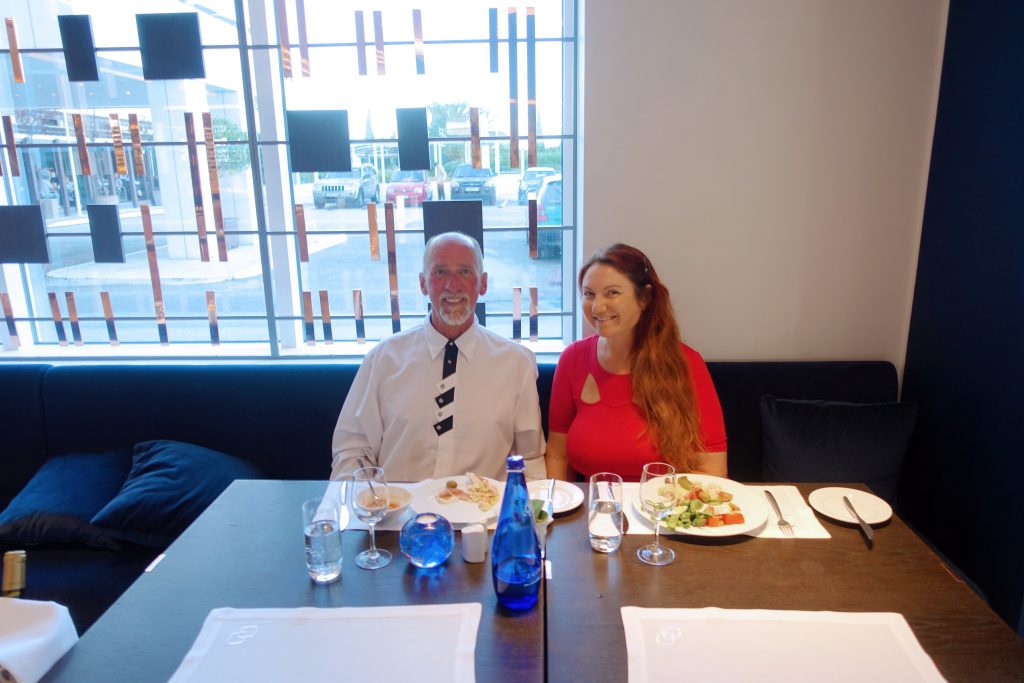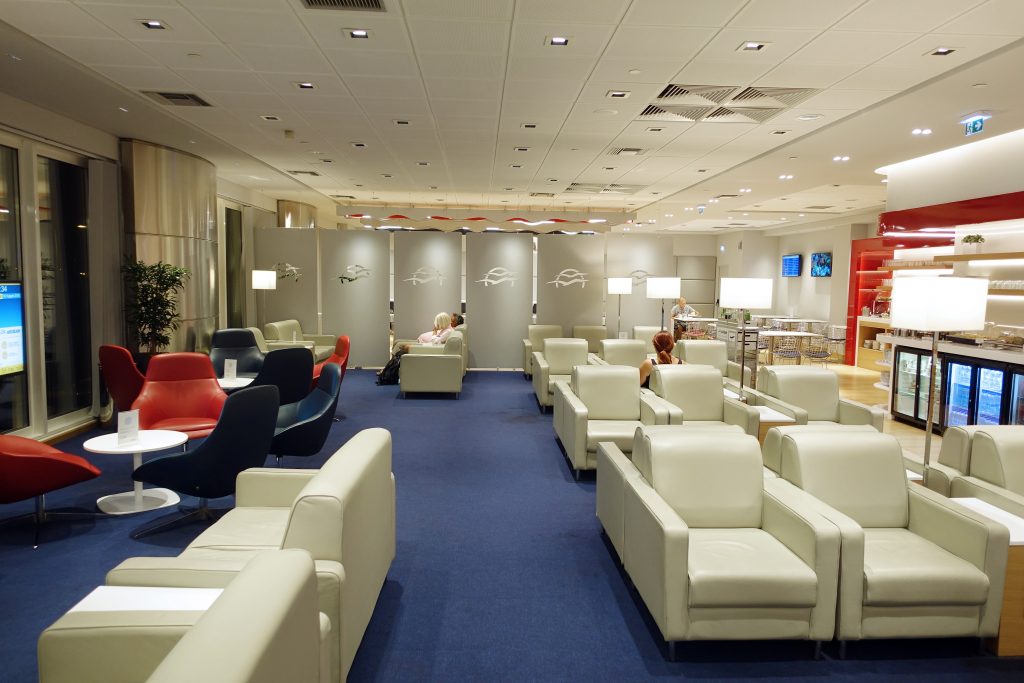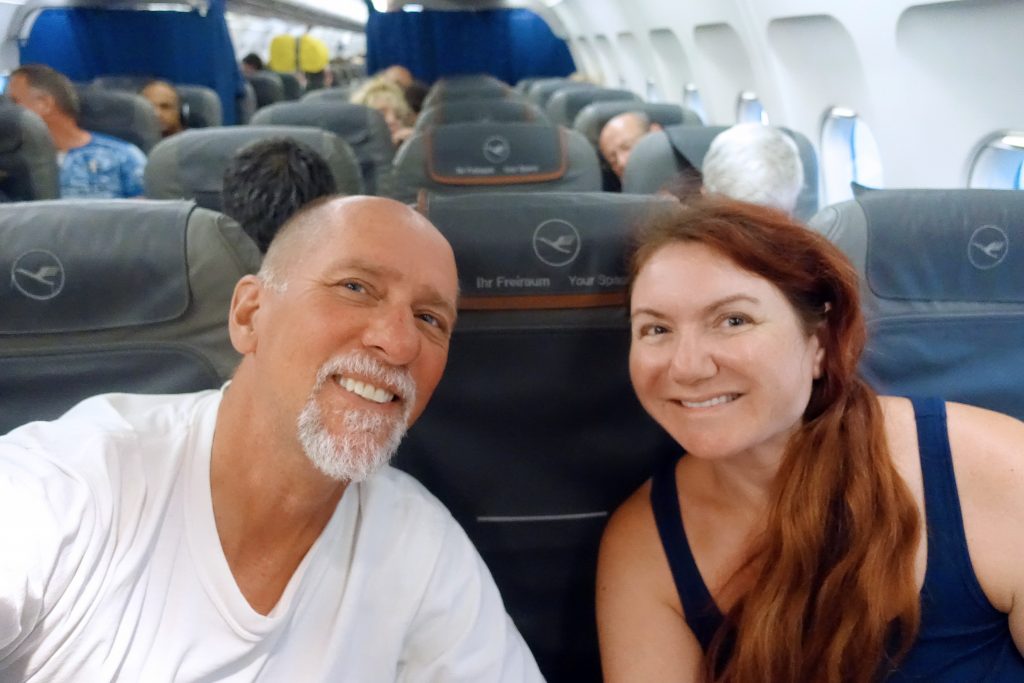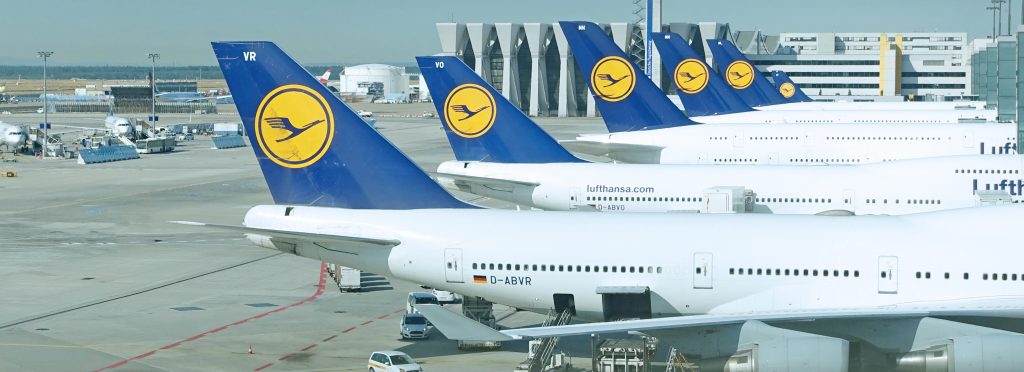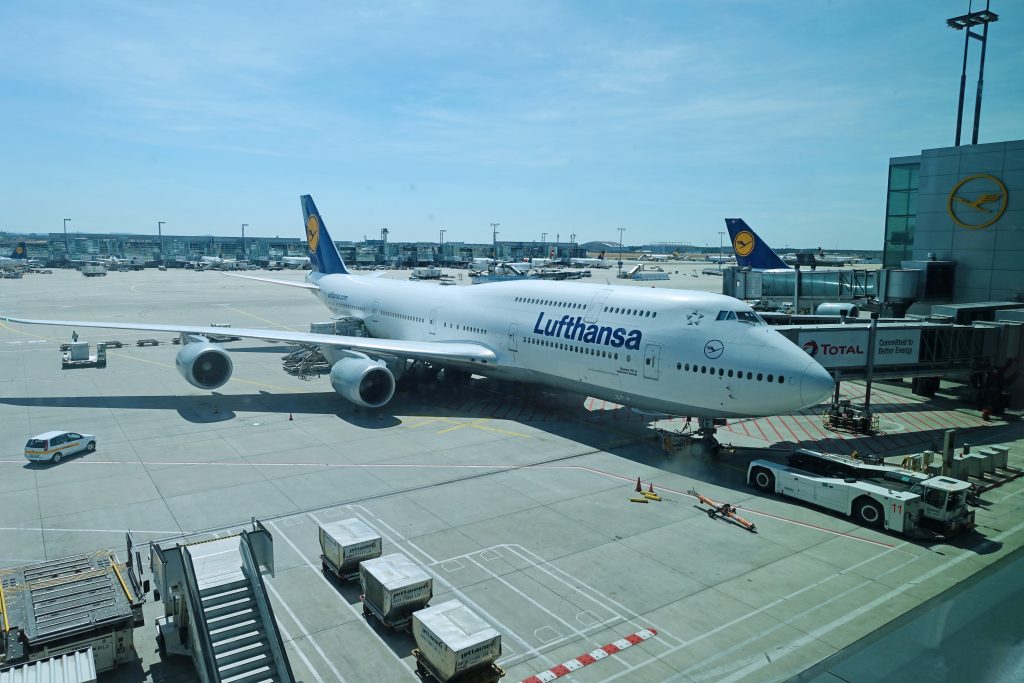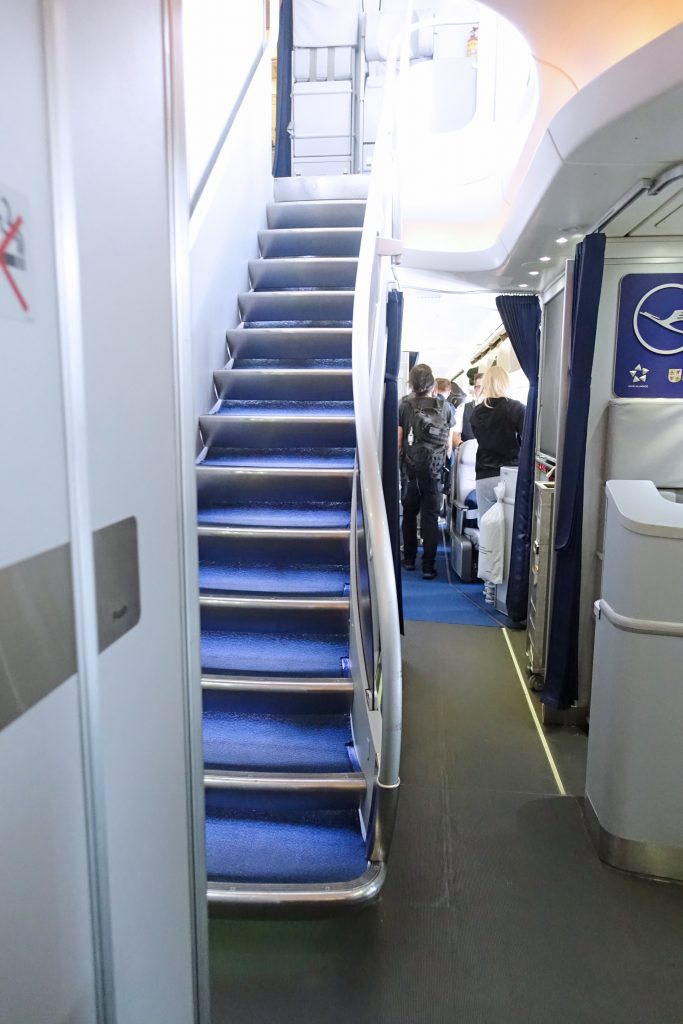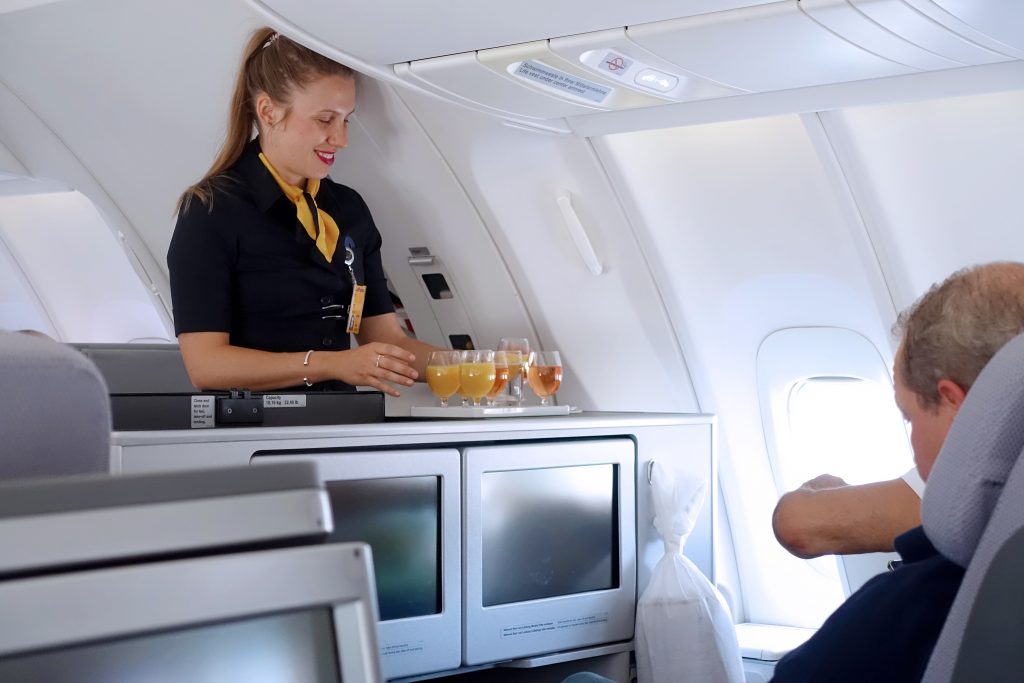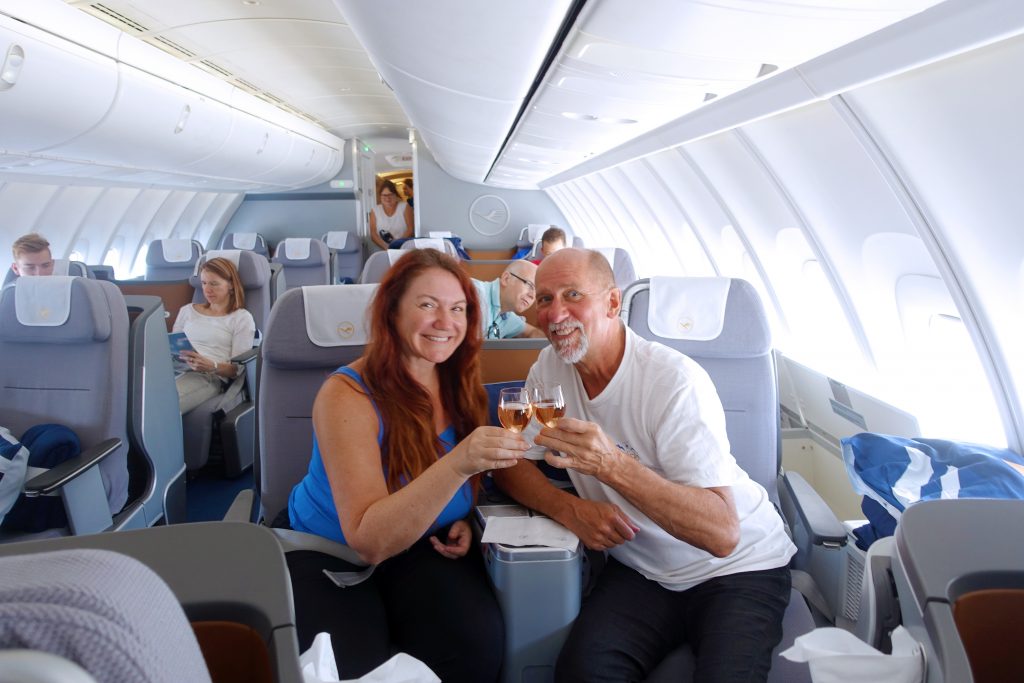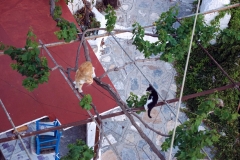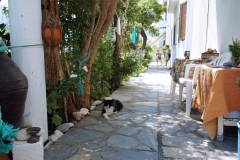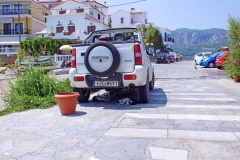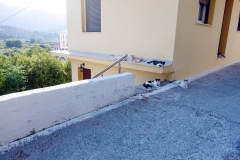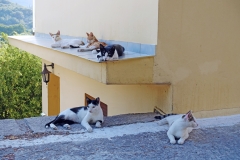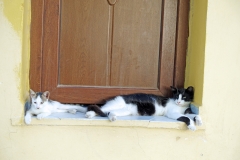The island of Samos, Greece, is more than just good food, beautiful country sides and beaches, and friendly people. It is also home to Pythagoreion and the Heraion of Samos, a UNESCO World Heritage Site that includes the Eupalinian aqueduct, a marvel of ancient engineering. Samos is the birthplace of the Greek philosopher and mathematician Pythagoras, after whom the Pythagorean theorem is named, the philosopher Epicurus, and the astronomer Aristarchus of Samos, the first known individual to propose that the Earth revolves around the sun.
We are visiting some of these wonders.
Samos Archaeological Museum
Our first museum is the Samos Archaeological Museum of Vathi. “This museum is built in the center of ancient Samos beside a very important archaeological site. It hosts approximately 3,000 exhibits coming from the ancient city, the surrounding area, and the city’s cemeteries. The museum presents the history of ancient Samos from the 5th millennium BC to the 7th century AD, in addition to the island’s significance in antiquity.
Parking is easy if you remember to put it in reverse before leaving.
The Kouros of Samos is an archaic sculpture dating to the sixth century BC. It is made of marble.
A kouros is an archaic Greek statue of a young man, standing and often naked, In Ancient Greek, kouros means “youth, boy, especially of noble rank”
Even the smallest artifact has painstaking detail.
This bronze griffin, ornament from a cauldron, was retrieved from the Heraion. These functioned as common votives to the goddess Hera.
This figurine has modern-day proportions.
This statue, just a few inches tall, has a unique hair style.
Lions were found in the middle east until historical times, and were not unknown to Greeks
This statue reminds us of modern day anime. Things never change, I guess.
Archaeological Museum of Pythagorion
Our next visit is to the Archaeological Museum of Pythagorion which houses about 3,000 items that were found in excavations in the ancient town of Samos and in other excavations around the island. These exhibits show the historical course of the island from the 5th millennium B.C. till the 7th century A.D. and depict the political importance of Samos in the ancient times.
The Roman emperor Trajan (Imperator Caesar Nerva Traianus Divi Nervae filius Augustus) wearing a garment on which is still preserved the decorative rosettes and the red pigment, characteristic of the imperial purple.
The signage near the statue stated that the head might not belong to the body. Nevertheless, notice the intricate marble carving of the toga.
This is a votive relief of Ammun in the form of a herm (according to museum signage). A sacrificial lamb stands on the altar.
Samos has a long history of pottery making, as evidences from these artifacts.
The attention to detail is striking.
As seen here, occasionally pottery exhibited actual writing.
It appears that the ruler (the largest figure) is speaking to man holding a leash of a slave.
Since we are at the end of our museum trip, we’ll leave you with the thought that these ancient men had very well-shaped buttocks. 😳
Saint Spyridon Church
We are near Saint Spyridon Church, so we decide to pay a visit.
Spyridon is the patron saint of potters, and is honored in both Eastern and Western Christian traditions.
Mr. Paschalis, whose large wealth allowed the structure to be completed, is celebrated directly above the door.
The microcephaly of the Saint is an illusion from the tallness of the painting.
The architectural rhythm of the church is a basilica with a dome and arched openings.
Everything in the church is ornate, even the rugs.
Painting and filigree cover almost every surface.
A sandbox votive altar seems to be the standard in Greek Orthodox churches on Samos.
We can only guess as to the significance and use of the bits of metal.
East meets West: this fellow is performing Surya mudra, which is alleged to have natural healing properties.
Time to leave and visit the most famous site on Samos, the Sacred Road.
Sacred Road
We have seen this archaeological site referred to as the Sacred Street, Sacred Way, Sacred Road, Heilige Strasse, and ιερά οδός, and we decide to use those interchangeably.
In its day, the Sacred Road linked the ancient city of Samos (present-day Pythagoreion) to the sanctuary.
According to the interwebs, “The cult of Hera on Samos dates back to Mycenaean times when a stone altar was set up in honour of the goddess. Hera was the patron of Samos, and in Greek mythology she was born there, daughter of Cronus and Rhea. The site became more grandiose over the next few centuries until the first substantial temple was built in the sacred complex known as the Heraion. This temple was one of the earliest in Greece to use stone. The 7th century BCE saw more additions and a wooden wall enclosed the site. In 570-560 BCE an all new limestone temple, much larger than its predecessor, was constructed by two noted architects, Rhoikos and Theodoros. Measuring 52.5 x 100 metres and with columns 18 metres high, it had a wooden entablature and tiled roof. Unfortunately, only a few years after its completion, the temple was destroyed by an earthquake.”
One lone column remains, a faint testament to the temple’s glory.
We are fascinated that the Greeks, knowing about earthquakes, continued to build huge, non-earthquake-proof structures. This looks like a Jenga game gone wrong.
A busload of tourists arrives, and we leave the main area to examine the architectural fragments section of the Sacred Path. (Tourists on busses rarely stay long at any location. Half the time they are just queuing up here or there.)
There is far more variation in the designs of the artifacts than we had imagined there to be.
This is some clever piece of work. Perhaps it was used as part of a water system.
After a while, we leave the architectural fragments section and visit the rest of the site. Precision cutting and assembling allowed the Greeks to build domed structures such as shown here.
Foundation walls of roman dwellings from 2nd/3rd century AD have been unearthed. This dwelling includes a courtyard decorated with an image of a trident and two dolphins.
These statues are “a monument unparalleled in the Archaic period,” although no one can seem to agree why.
Pieces of columns are abundant; these are some of the few still standing.
The scale of buildings needs to be experienced in order to (begin to) understand what this place once represented.
Going Home
We have been traveling for over two weeks, and it is time to return home. We arrive at the Athens airport, and visit the Duty Free shop.
Whoa! The cigarette packages catch our eye. You’d have to be REALLY addicted to put one of these in your mouth. Yikes!
The aircraft, courtesy of Aegean Airlines, arrives and we board for the quick flight to Athens. We watch the blue sea and the beautiful islands beneath us, happy with our memories.
The Sofitel Athens Airport hotel is comfortable and convenient. We briefly consider hiring a taxi to see Athens, but the day is late and the traffic, well, Athenian, so we decide to enjoy a pleasant dinner.
The next morning, we arrive early and wait in the lounge with the few other passengers taking an early morning flight.
Our non-stop flight from Athens to Frankfurt departs. We are tired and happy.
We have a short layover in Frankfurt, and I use the time to photograph the beautiful aircraft.
Finally, our aircraft arrives. This sucker is HUGE!
We board with the business and first class passengers, then ascend the stairs to the upper deck.
Everyone is smiling. It’s going to be a long flight, but what better place to be than the upper deck of a 747?
Notice all the space next to our seats. They don’t build them like that anymore.
Another wacky adventure comes to a close! 🙂
The Cats of Samos
Dang. We forgot something.
In Greece, cats sort of rule the place. On Samos Island this is definitely true; there are kitties everywhere and they enjoy the slow pace of island living.
If the cat is not “owned”, people in town will make sure they are fed and have fresh water. The kitties know exactly how to beg for food in the cutest way – think “puss n boots” eyes.”
Enjoy our photographs!

